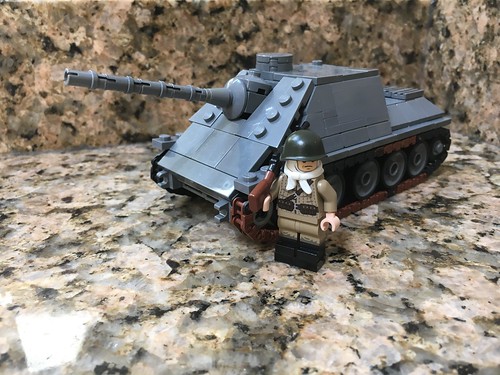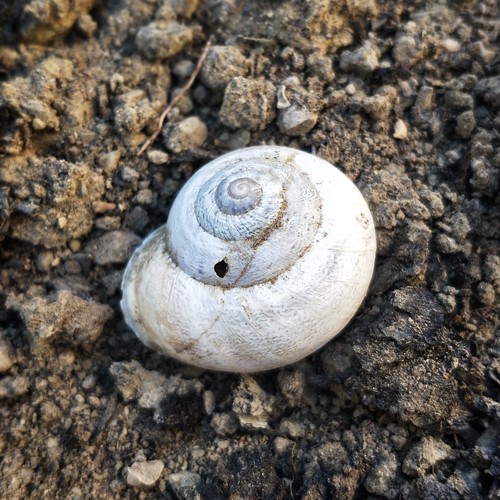F circulating miRNAs in MVsSimilar to circulating miRNAs in other body fluids, miRNAs in human plasma showed a significant stability against RNases and other harsh conditions, such as extreme temperature and pH [5,25]. To characterize the stability of secreted miRNAs in plasma, we selected eight plasma miRNAs with relatively high copy numbers detected by Solexa sequencing (Table S1). Employing a TaqMan probe-based quantitative real time polymerase chain reaction (qRT-PCR) assay [6,26], we first measured the levels of these miRNAs in the plasma of healthy donors. As shown in Figure 1A, miR-16, miR-223, miR-30a, miR-320b, let7b, miR-92a, miR-423-5p and miR-21 were confirmed by qRTPCR to have high expression levels in human plasma. When the human plasma was treated with 20 mg/ml RNaseA for various lengths of time, these miRNAs proved to be quite stable (Figure 1B). Interestingly, after separating the plasma into two fractions, MV and MV-free fractions, by sequential centrifugation, we found that these miRNAs were primarily localized in the MV fraction (Figure 1C). In this 15481974 study, we selected these miRNAs to characterize the mechanisms underlying the stability of the circulating miRNAs in MVs. Because the majority of miRNAs tested in this study were found in the MVs, these circulating miRNAs might be generally protected by the vesicular structure of the MVs from the extracellular RNaseA. First, to test whether the MVs protects the miRNAs from degradation by RNaseA, weRNA isolation and qRT-PCR of mRNA or mature miRNAsThe total cell RNA was extracted using Trizol reagent (Invitrogen). The RNA from human plasma, MVs, MV-free plasma and immunoprecipitation products was isolated using the miRNeasy Mini Kit (QIAGEN). The qRT-PCR was performed using TaqMan probes (Applied Biosystems, for mature miRNAs) or SYBR Green (Takara, for mRNA or pre-miRNA) [6,13]. Briefly, the total RNA was reverse-transcribed to cDNA using AMV reverse transcriptase (Takara) and a stem-loop RT primer or Reverse primer (Applied Biosystems). The real-time PCR was performed on an Applied Biosystems 7900 Sequence Detection System (Applied Biosystems). All of the reactions, including the notemplate controls, were run in triplicate. After the reactions, the CT values were determined using fixed threshold settings.Immunoprecipitation and immunoblottingCells or MVs were lysed with lysis buffer (20 mM Tris-HCl, 150 mM NaCl, 0.5 Nonidet P-40, 2 mM EDTA, 0.5 mM DTT, 1 mM NaF, 1 mM PMSF and 1 Protease Inhibitor Cocktail from Sigma, pH 7.5) for 30 min on ice. The lysates were cleared by KDM5A-IN-1 chemical information centrifugation (16,0006g) for 10 min at 4uC and then immunoprecipitated with mouse monoclonal  anti-Ago2 antibody or mouse normal IgG followed by protein G-Agarose beads. After the elution from the beads, the RNA was prepared using aAgo2 Complexes Protect Secreted miRNAsdisrupted the MVs by adding 0.1 Triton X-100 (TX-100) during the RNaseA treatment. As shown in Figure 1D, the 12926553 levels of these eight miRNAs were significantly decreased, indicating that the vesicular structure of the MVs does provide general protection for the miRNAs that are stored inside the MVs. However, even without CAL-120 intact MVs, these eight miRNAs still showed varying degrees of resistance to RNaseA (Figure 1D). For miR-16, more than 60 of the total miR-16 was intact and detected by a qRTPCR assay after the disruption of the MVs, whereas less than 30 of the total miR-30a was detected. Second, to test whether proteins play a role in.F circulating miRNAs in MVsSimilar to circulating miRNAs in other body fluids, miRNAs in human plasma showed a significant stability against RNases and other harsh conditions, such as extreme temperature and pH [5,25]. To characterize the stability of secreted miRNAs in plasma, we selected eight plasma miRNAs with relatively high copy numbers detected by Solexa sequencing (Table S1). Employing a TaqMan probe-based quantitative real time polymerase chain reaction (qRT-PCR) assay [6,26], we first measured the levels of these miRNAs in the plasma of healthy donors. As shown in Figure 1A, miR-16, miR-223, miR-30a, miR-320b, let7b, miR-92a, miR-423-5p and miR-21 were confirmed by qRTPCR to have high expression levels in human plasma. When the human plasma was treated with 20 mg/ml RNaseA for various lengths of time, these miRNAs proved to be quite stable (Figure 1B). Interestingly, after separating the plasma into two fractions, MV and MV-free fractions, by sequential centrifugation, we found that these miRNAs were primarily localized in the MV fraction (Figure 1C). In this 15481974 study, we selected these miRNAs to characterize the mechanisms underlying the stability of the circulating miRNAs in MVs. Because the majority of miRNAs tested in this study were found in the MVs, these circulating miRNAs might be generally protected by the vesicular structure of the MVs from the extracellular RNaseA. First, to test whether the MVs protects the miRNAs from degradation by RNaseA, weRNA isolation and qRT-PCR of mRNA or mature miRNAsThe total cell RNA was extracted using Trizol reagent (Invitrogen). The RNA from human plasma, MVs, MV-free plasma and immunoprecipitation products was
anti-Ago2 antibody or mouse normal IgG followed by protein G-Agarose beads. After the elution from the beads, the RNA was prepared using aAgo2 Complexes Protect Secreted miRNAsdisrupted the MVs by adding 0.1 Triton X-100 (TX-100) during the RNaseA treatment. As shown in Figure 1D, the 12926553 levels of these eight miRNAs were significantly decreased, indicating that the vesicular structure of the MVs does provide general protection for the miRNAs that are stored inside the MVs. However, even without CAL-120 intact MVs, these eight miRNAs still showed varying degrees of resistance to RNaseA (Figure 1D). For miR-16, more than 60 of the total miR-16 was intact and detected by a qRTPCR assay after the disruption of the MVs, whereas less than 30 of the total miR-30a was detected. Second, to test whether proteins play a role in.F circulating miRNAs in MVsSimilar to circulating miRNAs in other body fluids, miRNAs in human plasma showed a significant stability against RNases and other harsh conditions, such as extreme temperature and pH [5,25]. To characterize the stability of secreted miRNAs in plasma, we selected eight plasma miRNAs with relatively high copy numbers detected by Solexa sequencing (Table S1). Employing a TaqMan probe-based quantitative real time polymerase chain reaction (qRT-PCR) assay [6,26], we first measured the levels of these miRNAs in the plasma of healthy donors. As shown in Figure 1A, miR-16, miR-223, miR-30a, miR-320b, let7b, miR-92a, miR-423-5p and miR-21 were confirmed by qRTPCR to have high expression levels in human plasma. When the human plasma was treated with 20 mg/ml RNaseA for various lengths of time, these miRNAs proved to be quite stable (Figure 1B). Interestingly, after separating the plasma into two fractions, MV and MV-free fractions, by sequential centrifugation, we found that these miRNAs were primarily localized in the MV fraction (Figure 1C). In this 15481974 study, we selected these miRNAs to characterize the mechanisms underlying the stability of the circulating miRNAs in MVs. Because the majority of miRNAs tested in this study were found in the MVs, these circulating miRNAs might be generally protected by the vesicular structure of the MVs from the extracellular RNaseA. First, to test whether the MVs protects the miRNAs from degradation by RNaseA, weRNA isolation and qRT-PCR of mRNA or mature miRNAsThe total cell RNA was extracted using Trizol reagent (Invitrogen). The RNA from human plasma, MVs, MV-free plasma and immunoprecipitation products was  isolated using the miRNeasy Mini Kit (QIAGEN). The qRT-PCR was performed using TaqMan probes (Applied Biosystems, for mature miRNAs) or SYBR Green (Takara, for mRNA or pre-miRNA) [6,13]. Briefly, the total RNA was reverse-transcribed to cDNA using AMV reverse transcriptase (Takara) and a stem-loop RT primer or Reverse primer (Applied Biosystems). The real-time PCR was performed on an Applied Biosystems 7900 Sequence Detection System (Applied Biosystems). All of the reactions, including the notemplate controls, were run in triplicate. After the reactions, the CT values were determined using fixed threshold settings.Immunoprecipitation and immunoblottingCells or MVs were lysed with lysis buffer (20 mM Tris-HCl, 150 mM NaCl, 0.5 Nonidet P-40, 2 mM EDTA, 0.5 mM DTT, 1 mM NaF, 1 mM PMSF and 1 Protease Inhibitor Cocktail from Sigma, pH 7.5) for 30 min on ice. The lysates were cleared by centrifugation (16,0006g) for 10 min at 4uC and then immunoprecipitated with mouse monoclonal anti-Ago2 antibody or mouse normal IgG followed by protein G-Agarose beads. After the elution from the beads, the RNA was prepared using aAgo2 Complexes Protect Secreted miRNAsdisrupted the MVs by adding 0.1 Triton X-100 (TX-100) during the RNaseA treatment. As shown in Figure 1D, the 12926553 levels of these eight miRNAs were significantly decreased, indicating that the vesicular structure of the MVs does provide general protection for the miRNAs that are stored inside the MVs. However, even without intact MVs, these eight miRNAs still showed varying degrees of resistance to RNaseA (Figure 1D). For miR-16, more than 60 of the total miR-16 was intact and detected by a qRTPCR assay after the disruption of the MVs, whereas less than 30 of the total miR-30a was detected. Second, to test whether proteins play a role in.
isolated using the miRNeasy Mini Kit (QIAGEN). The qRT-PCR was performed using TaqMan probes (Applied Biosystems, for mature miRNAs) or SYBR Green (Takara, for mRNA or pre-miRNA) [6,13]. Briefly, the total RNA was reverse-transcribed to cDNA using AMV reverse transcriptase (Takara) and a stem-loop RT primer or Reverse primer (Applied Biosystems). The real-time PCR was performed on an Applied Biosystems 7900 Sequence Detection System (Applied Biosystems). All of the reactions, including the notemplate controls, were run in triplicate. After the reactions, the CT values were determined using fixed threshold settings.Immunoprecipitation and immunoblottingCells or MVs were lysed with lysis buffer (20 mM Tris-HCl, 150 mM NaCl, 0.5 Nonidet P-40, 2 mM EDTA, 0.5 mM DTT, 1 mM NaF, 1 mM PMSF and 1 Protease Inhibitor Cocktail from Sigma, pH 7.5) for 30 min on ice. The lysates were cleared by centrifugation (16,0006g) for 10 min at 4uC and then immunoprecipitated with mouse monoclonal anti-Ago2 antibody or mouse normal IgG followed by protein G-Agarose beads. After the elution from the beads, the RNA was prepared using aAgo2 Complexes Protect Secreted miRNAsdisrupted the MVs by adding 0.1 Triton X-100 (TX-100) during the RNaseA treatment. As shown in Figure 1D, the 12926553 levels of these eight miRNAs were significantly decreased, indicating that the vesicular structure of the MVs does provide general protection for the miRNAs that are stored inside the MVs. However, even without intact MVs, these eight miRNAs still showed varying degrees of resistance to RNaseA (Figure 1D). For miR-16, more than 60 of the total miR-16 was intact and detected by a qRTPCR assay after the disruption of the MVs, whereas less than 30 of the total miR-30a was detected. Second, to test whether proteins play a role in.